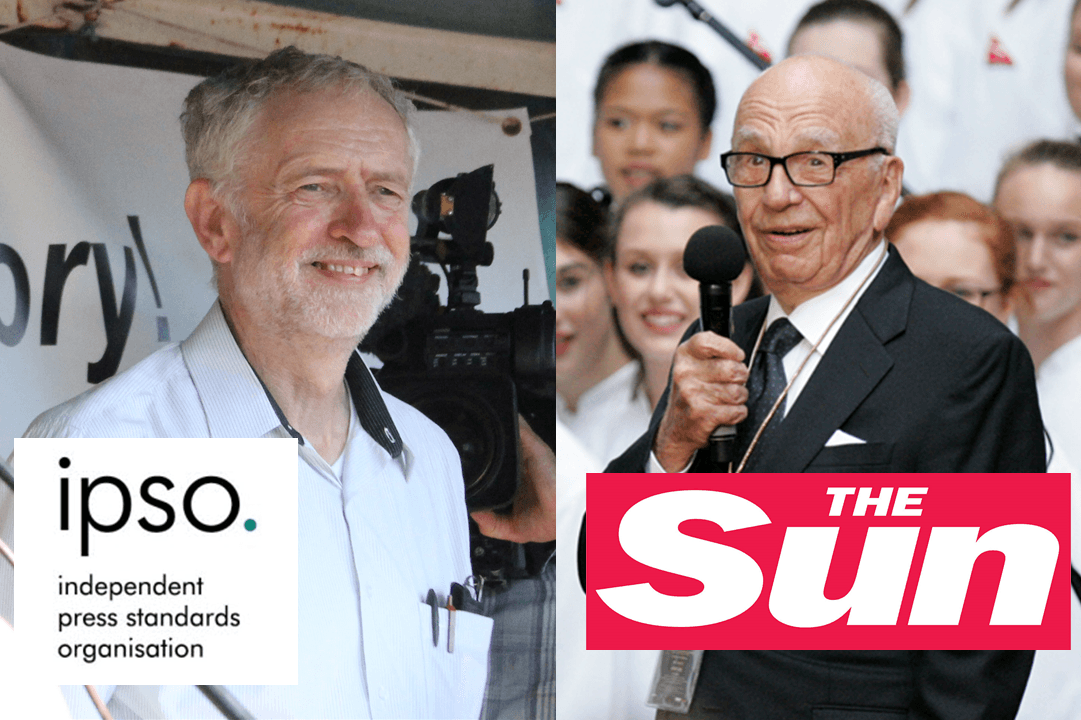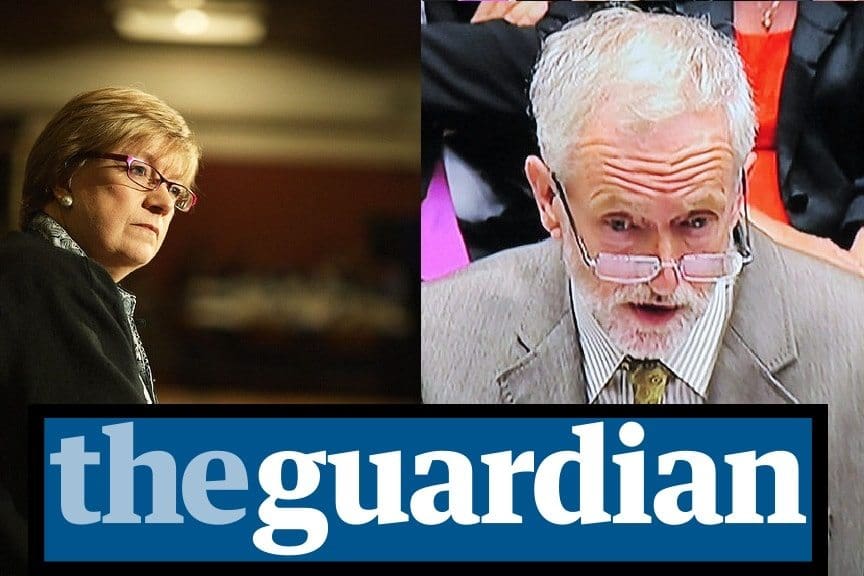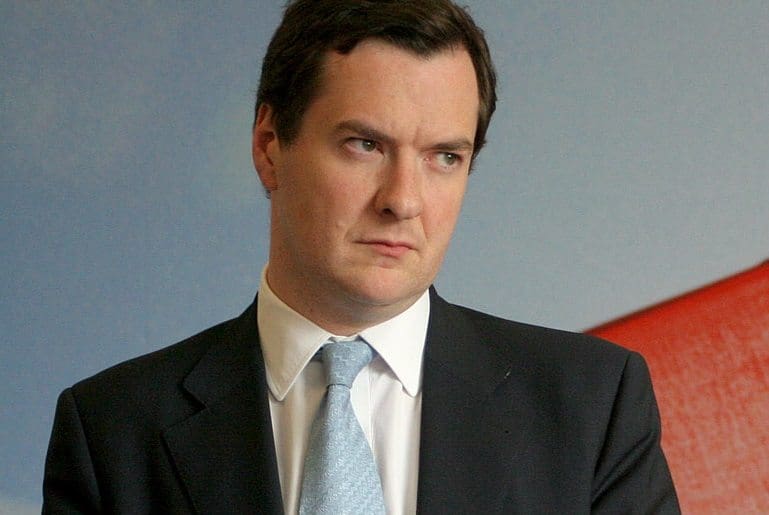As offices close, and mistletoe kisses occur at work parties across the nation, George Osborne slipped a card in our pockets which read: ‘Merry Christmas! I’ve overspent by billions this year, and I used your credit card to do it.’
As Business Insider reports:
The UK’s public sector borrowing figures for November just came in and they’re much higher than expected.
Britain borrowed £14.2 billion ($21.1 billion) last month to keep public sectors ticking over, up from £7.4 billion ($11 billion) in October. Economists had forecast a deficit of £11 billion ($16.3 billion).
This is not good news for Osborne. But it’s far worse news for UK taxpayers and the UK economy – and no doubt all those reliant on the welfare state, which will no doubt be forced to pay the price in cuts for Osborne’s extravagances elsewhere.
A look at the Office for National Statistic’s chart of public sector borrowing over the years supports the findings – debt is not going down.

Which begs the question: where is all this borrowing coming from if everything is being cut?
Short History of UK National Debt

National Debt was a facility created by the development of bills and bonds in the 17th century. It provided a way for governments to finance wars. It is recorded in £’s but it is also important to see it as a percentage of GDP. This is important because debt is not significant without understanding how it relates to our income.
Funding World War I meant the debt shooting up to £7.4bn (127% of GDP) between 1914 and 1919. The following two decades saw the Wall Street crash in the 20’s, followed by the recession of the 30’s yet by 1939 national debt had only increased by 10% of GDP, to 137%.
Another World War saw the debt sky rocket again to £21.4bn (225% of GDP). Now, here’s where it gets really interesting.
After World War II, the electorate voted in a Labour government who had promised to create a welfare state based on the ideas of William Beveridge. Beveridge wanted to tackle what he called the “five giants” – want, disease, squalor, ignorance, and idleness – through a universal welfare state which would provide a comprehensive health service, vastly expanded public housing, free and universal secondary education, and full employment, as well as benefits for the poor and family allowances. Clement Attlee’s post-war Labour government built over a million new homes, 80% of which were social housing. The period of 1945 to 1970 saw an average of 170,000 council homes built every year.
One might imagine that amount of investment would have cost rather a lot. However, between 1945 and 1980 national debt had fallen to just 45% of GDP.
Here’s where it starts to get a little weird. In the thirty years since, during the neoliberal era of deregulation and denationalisation, the national debt has risen to £1.6 trn, and over 80% of GDP (everything the UK earns in a year).
This means the debt has almost doubled as a percentage of GDP during the neoliberal period. The policies first implemented by Thatcher, and rolled out by every government since, have doubled the national debt of the nation.
Denationalisation and the Rise in the Cost of Living
During the period that this debt bomb has gone off, the principals of a sharing, cooperative society were also cast aside. This saw a move away from public spaces and services, and towards the privatisation of services, utilities and space.
A great sell off occurred under the Thatcher government from 1979; British Aerospace, Cable & Wireless, Jaguar, British Telecom, British Steel, British Petroleum, Rolls Royce, British Airways, and utilities such as water and electricity all went up for sale. The state-built, subsidised housing stock was put up for sale. Prior to Thatcher, all services and industry listed above were state owned, with wages and prices controlled by a democratically elected government.
These policies have been continued since, and the result has been a dramatic rise of the cost of living.
In the ten years between 1999 and 2009, the annual salary rose 13.6%. During the same period, house prices went up 130%, a loaf of bread went up 147%, a litre of petrol went up 42%. This goes some way to accounting for the fact that personal debt rose during this period by 158% as access to credit created consumer demand which concealed the gap between wage and cost of living inflation.
Sadly, under the Coalition government, and the new Conservative government things got even worse – the Consumer Price Index (which tracks inflation in prices of the goods we buy) hit 5.2% during 2012, the highest rate of inflation in the UK since in recorded history. Energy prices have continued to rise at three times the rate of inflation despite record profits by the energy companies.
It is clear and beyond doubt: it simply costs more to live in a state where the basics we need to survive are handed over to private interests to profit from. We had it better when we shared.
Privatised Profits, Socialised Losses
So, the privatisation of our public services has seen a rise in personal debt; that makes sense. But one would think that there would have been a corresponding fall in public debt. Instead, as we have seen, the debt has risen. So what are they spending all this money on?
The truth is, they never really privatised as they said they did. They privatised profit, and they socialised investment and losses.
It doesn’t matter which sector you choose, the role of the state has become handing out tax breaks and subsidies whilst acting as a guarantor against losses. This is the role of tax payer money which successive governments have prioritised above making life better for everyone.
Socialised Losses
The most obvious recent example was the Bankers Bailout. In the bailout of 2008/9, the UK government had to guarantee funding to the banking sector, of 101% of GDP. That is, the UK diverted over £2trn of tax payer money from public expenditure, to a handful of banks.
This is equivalent to almost 3 times its entire annual budget; twenty years of NHS spending (£106.7bn a year); forty years of education spending (£48.2bn); or five hundred years of job seekers allowance (£4.9bn a year).
In the Autumn Statement of this year, Osborne handed out yet more favours by subsidising tax cuts for wealthy individuals and corporations by cutting public funding and welfare for the majority of citizens.
Private Finance Initiatives (PFI)
Our hospitals and schools have been built under private loans called Private Finance Initiatives, rather than government borrowing. These loans are at least twice the rate of interest that government loans would have been. These loans are then repaid over 25-30 years.
Today, 22 of the 103 NHS trusts to enter PFI are facing difficulty due to the exorbitant repayments required to pay back the so-called NHS Mortgage (paying back the company for building the hospital). Some hospitals are having to handover a fifth of their annual budget on paying for the PFI deal.
In Education, the tax payer has picked up a £70m bill for PFI schools which had to close.
Overall, for a capital investment of £54.7bn (that’s how much money we actually borrowed to build stuff), the tax payer will pay back an astounding £301bn in just twenty five years. Given the disasters of debt witnessed so far, many of the 771 PFI projects currently running will bust the budget of these schools and hospitals long before then, leaving us with the debt but not the service.
Outsourcing
There has been massive outsourcing of the provision of public services, effectively leaving many services as public sector branded, tax payer funded, private interests. I covered this extensively in an article in 2012 so please see that for the full detail. Here I will use just one example, our courts.
The cost of running a court room has increased to £110 a minute due to the rapid rise of private contractors’ high costs for security, language services, cleaning, transport, and so on. Companies such as G4S and Serco are making enormous profits, where once that money would have been used to pay staff, improve services, or simply never charged. G4S provide 800 staff to the Old Bailey. They charge £11.49 per security guard, while paying the guard just £6.45 – that’s just under £42m a year they make from this one court.
This has been replicated in the health service, education, prisons, probation, the police force…everywhere. The result? The costs of the service rise exponentially, the service quality declines and the service itself becomes less and less accountable to us.
Subsidies, Tax Breaks and Tax Avoidance
While we have privatised rail, energy, utilities and energy – we continue to pay massive subsidies to the private companies running them now. When we aren’t handing money over directly, the government is letting them off paying their dues.
The UK government made £5.3bn by selling British Rail. This equates to a mere 3 years in the increased, yes increased, state subsidy agreed by the UK government. This means, the companies gave us £5.3bn in 1996, and we gave that back in subsidies in the following three years. Not only that, but we continue to pay the subsidy. In fact, today, the rail subsidy stands at £4.8bn a year. By 2013, fare-payers were already contributing £6.2bn per year. Therefore, we sold a service for £5.3bn in 1996, which we now rent for £11.5bn per year – paying three times the fares of our EU counterparts.
Gas and Oil prices were subsidised to the tune of £3.6bn in 2010, whilst renewable energy projects received just a third of that. And with the exception of the first two years of the financial crisis, this figure has risen consistently over time.
And finally, taxation. Only one in four of the UK’s top companies pay their taxes, meanwhile they were receiving tax credits to the tune of hundreds of millions of pounds by people who did pay their taxes.
Company taxes now constitute only 12.5% (Corporation Tax is just 7%) of the tax revenues of the UK. In comparison, the people’s taxes, (income tax and VAT) make up more than 60% of the tax income.
Corporation Tax is lower today than at any time in its history. UK Corporation Tax in 1984 was 52%. By 1986 it was 36%. In 1999 it dropped to 30% and the current government plan to cut it from 20% to 18% during this parliament.
Even with these paltry taxes, tax avoidance is costing us almost £70bn each year.
Never Have So Many Given So Few So Much
David Cameron lamented in a June 2012 speech:
“Today, almost one pound in every three spent by the Government goes on welfare.”
The truth is Cameron wants that pound joining the other three, funding a taxpayer-subsidised corporate state.
Every budget, every policy, every sound bite is designed to promote the ideas that have us facing spiralling debt, rising unemployment, crumbling infrastructure, bankrupt schools and hospitals and a rapidly eroding welfare state to mop up the mess.
It is time for us to share the proceeds of our industrious, innovative, caring society with each other. It is time to end this parasitic relationship where the state is ever more simply the vehicle by which the few are delivered the profits of the endeavours of the many.
Featured Image via Newsbiscuit

















